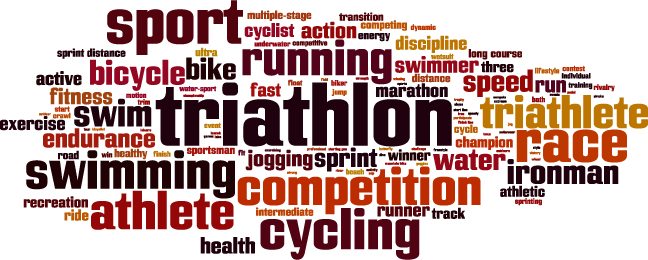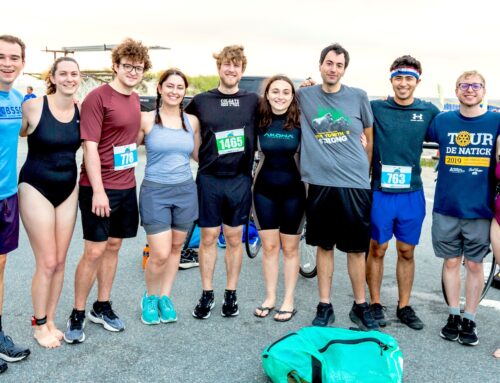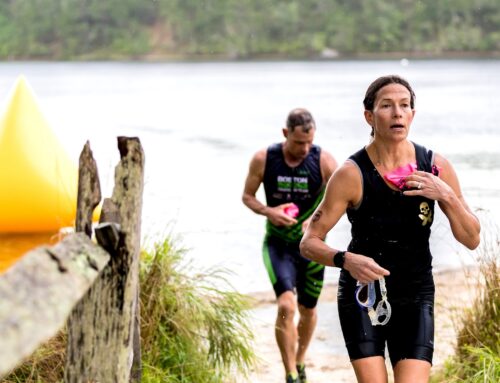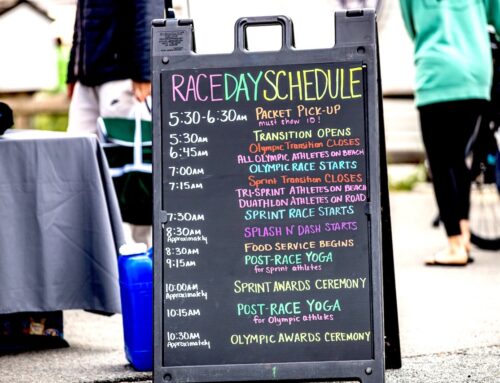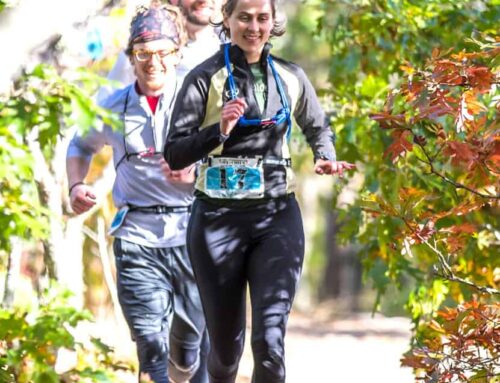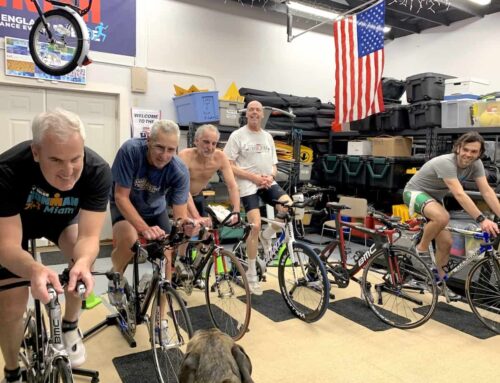If you’re new to triathlons, there is a long list of intimidating challenges.
However, we are a supportive and fun community so there is nothing to be afraid of — especially not knowing the lingo! In order to help ease the transition into being a triathlete, New England Endurance Events has compiled a list of common terms that competitors use and what they mean:
Aero Bars: Not a tasty snack; rather these are handlebars that position your arms and torso to reduce your frontal area against the wind and gain some speed.
AHR: In training it’s Average Heart Rate. Late-season it’s Another Hard Race.
Bonk: When you’re all out of mojo.
Brick: Don’t worry, you’re not taking any bricks along for the ride — you’re just biking AND running in the same training session.
Cadence: With no association to its musical dictionary meaning, this term for triathletes is the rate at which you turn your pedals on the bike or legs on the run.
Combat Swimming: At the start of the race you have a choice. You can swim to the side or the rear of the pack, or you can enjoy some “combat swimming.” A friend we won’t name (Robin) might not be in this sport if it weren’t for this part of it.
Cookies: Why we race.
DNF: Did not finish (but sure as hell tried, which is better than most can say).
DFL: Dead f*cking last (but alive).
Drafting: On the bike, it’s placing yourself behind another rider to use them to break the wind (ILLEGAL! ). On the swim, it’s tickling the toes of the swimmer ahead of you (LEGAL! But grabbing calf: NOT LEGAL!).
Garmin: The Apple Watch of the tri world (aka: awesome, expensive, and probably not necessary).
IM: The Ironman Triathlon which really does require a metal heart to survive. The race consists of a 2.4-mile (3.86 km) swim, a 112-mile (180.25 km) bicycle ride and a marathon 26.2-mile (42.2 km) run — raced in that order and usually without a break for cookies (see above).
Negative split: When you complete the second half of a leg faster than the first. A very rare, if unachievable, experience for most of us.
Olympic: The “international” length of a triathlon, named after the distance used in the Olympics. Made up of a 0.93 mi (1.5 km) swim, 25 (40 km) mi bike, and 6.2 mi (10 km) run. Some people have the gall to include this in the category of “short-distance.”
PB: Commonly mistaken as peanut butter, but actually stands for personal best.
Rabbit: The fellow racer you pick out early in a race as a person to follow, and eventually beat. Men of a certain age have been known to select a shapely and speedy female as their rabbit, so beware.
Sprint: Typically a quarter-mile swim, 10 mile bike, and 5k run. The shortest race, and a great way to kick off your triathlon career.
Swag: All the goodies handed out at races! Who doesn’t need a T-shirt for each day of the year?
T1: The transition from the swim to the bike. Nudity, once allowed in the old days, is no longer allowed unless you’re in the changing tent!
T2: The transition from the bike to the run. For many of us there’s a porta-potty stop involved.
Tats: Race numbers so that race officials and photographers can spot you, and a conversation starter wherever you go for the next several days.
Tri-bike: A bicycle that is lighter and more aerodynamic (and more expensive). A steeper seat tube angle (compared to a road bike) makes running easier afterwards. Such a bike may or may not help triathletes go faster…but certainly makes them look very serious.
The Washing Machine: The spin cycle that is the flailing arms, legs, and foam during the start of the swim (or sometimes the whole swim in a Sprint).
Tri Geek: Just like a normal geek but rather than world of Warcraft they’re talking your ear off about all things triathlon.
We hope you found this article useful. If so, give us a like on Facebook! See you out there in an aero position!
Alyson Scherding

